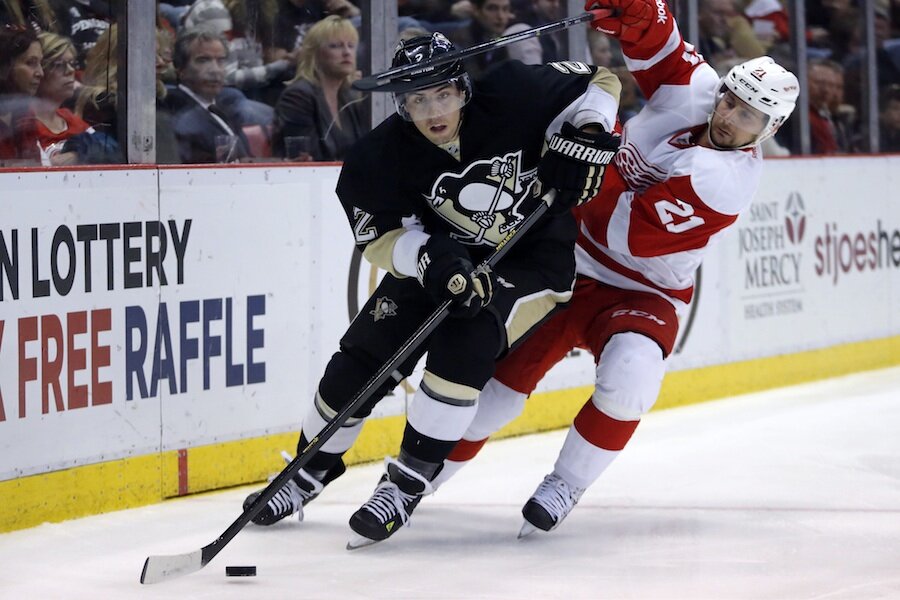Melting ice rinks? Why NHL has 'vested interest' to curb global warming
Loading...
| Washington
Climate change is threatening penguins – the Pittsburgh Penguins.
A new report from the National Hockey League documents global warming’s impacts on even the neighborhood ice rink – a concern for an organization that depends on future pools of skating talent. The report, released Monday, is the most extensive sustainability report ever produced by a US sports league, according to the NHL.
Hockey isn't the only sport pursuing sustainability, though. Athletic events around the world – from the World Cup to the Olympics – have been trying to tackle pollution and cut energy use for years. Environmental groups work with sporting leagues like Major League Baseball and the National Football League to track environmental impact and set reductions goals. As games become even grander displays, with bigger screens and brighter lights, leagues are trying to rein in ballooning energy demands and the emissions that come with it.
Energy and climate concerns hit particularly close to home in hockey, given the sport’s dominance in chilly climates and its reliance on available water. It’s why climate change and water scarcity pose “major environmental challenges” for hockey, the NHL said in its inaugural sustainability report Monday.
“We have a vested interest in this cause,” NHL Commissioner Gary Bettman said Monday in a letter accompanying the report. “As a business, we rely on freshwater to make our ice, on energy to fuel our operations and on healthy communities for our athletes, employees and fans to live, work and play.”
To confront the issue, the NHL and Natural Resources Defense Council, a New York-based environmental organization, collaborated on the document, which outlines the league’s environmental impacts and charts its goals. The report even estimates the NHL’s total carbon footprint: 530,000 metric tons of greenhouse gases each year. That’s comparable to the yearly emissions from 111,000 cars, according to the EPA’s emissions calculator.
But environmental progress in sports has been mixed, and sustainability efforts have sometimes fallen by the wayside – like in Brazil, where Olympic organizers are far from meeting environmental goals in advance of Rio de Janeiro’s 2016 summer games.
The NHL’s report differs from past efforts in several respects, though.
First, the NHL’s report provides comprehensive baseline emissions estimates. Those numbers serve as a yardstick for future progress, according to Jonathan Casper, a professor at North Carolina State University who studies environmental sustainability and sports.
“They’re looking at real metrics and the overall league impact,” Mr. Casper says in a telephone interview Tuesday, noting that the NHL tabulated its 530,000 metric tons of annual greenhouse emissions. “That’s the real breakthrough with this report.”
Builders and teams have also begun to think more about sustainability while planning new sporting venues, according to Stephanie Katsaros, principal and sustainability strategist at Chicago-based environmental consulting firm BrightBeat.
“It’s a lot easier to look at energy efficiency when you're starting from scratch,” Ms. Katsaros says in a telephone interview Tuesday.
Casper said the NHL also touts its green credentials because the issue helps endear the league to fans, cementing its status as a good community-member. “The green platform is a nice, safe platform because there are very few people that are against environmental sustainability,” Casper says.
Sustainability is also increasingly attractive in economic terms – regardless of its appeal in the league’s marketing materials.
“There is a value proposition in sustainability," Katsaros says. "You use less energy, you’re paying for less energy.”
And the impact of “going green” for a sports team is magnified by all the fans who might follow suit. “To positively influence a fan base, a group of like-minded individuals, and inspire them to change in your venue and their lives – you're exponentially growing the impact of your efforts,” Katsaros says.





